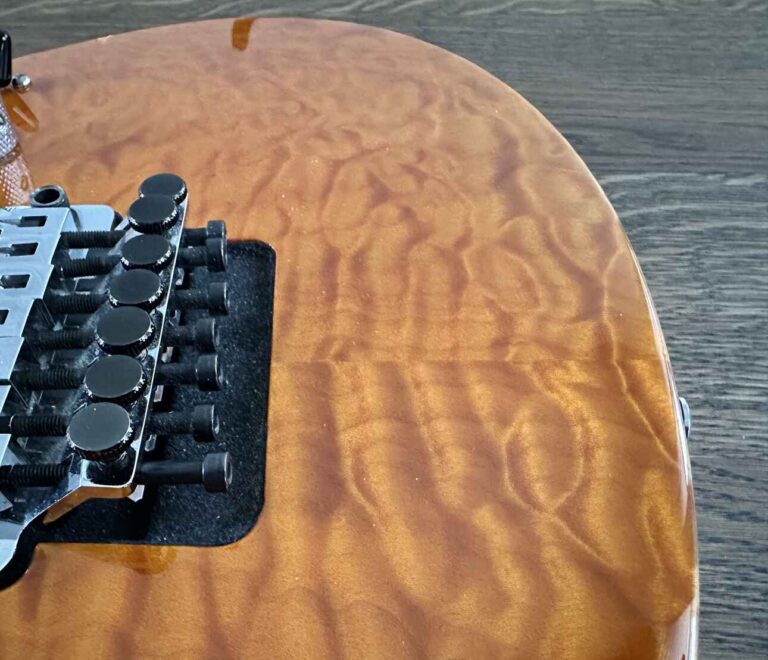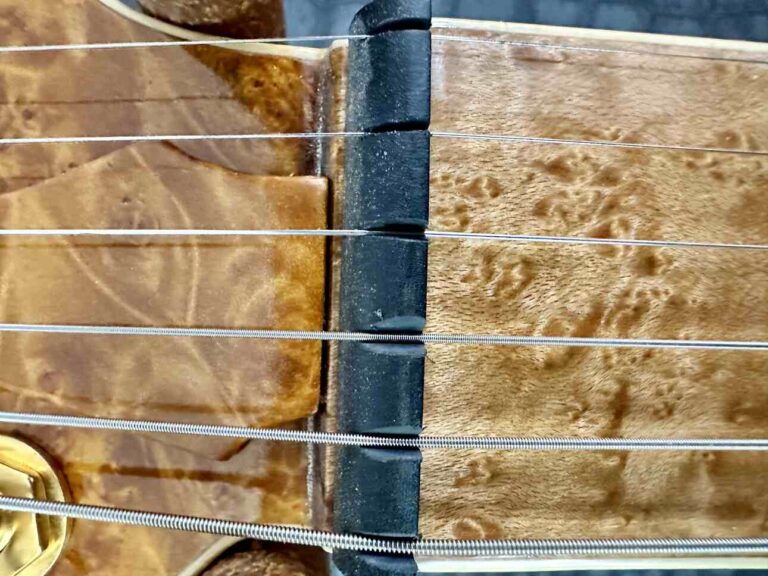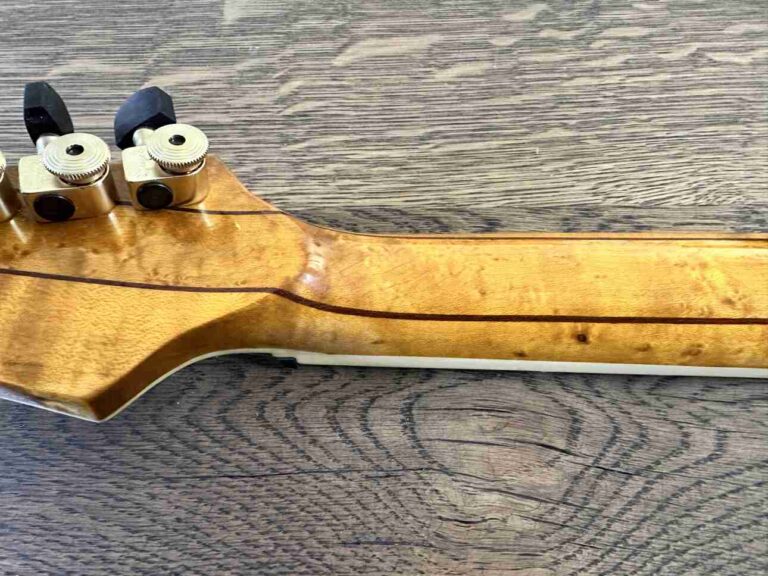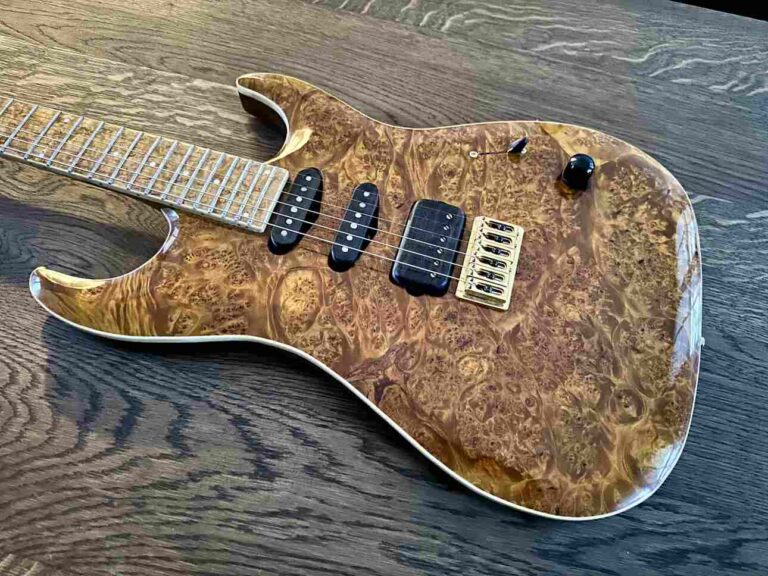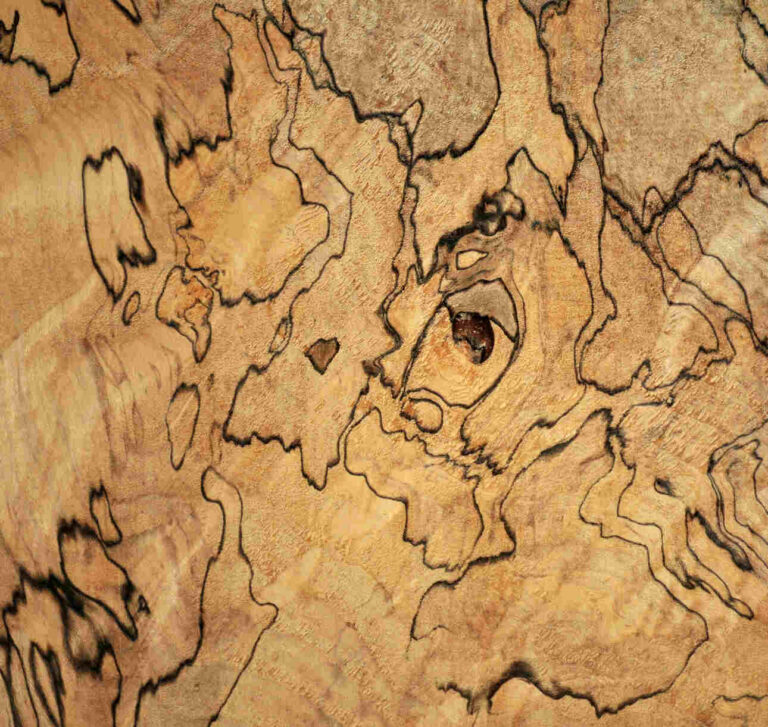What is the Heaviest Electric Guitar Tonewood? Density is Destiny
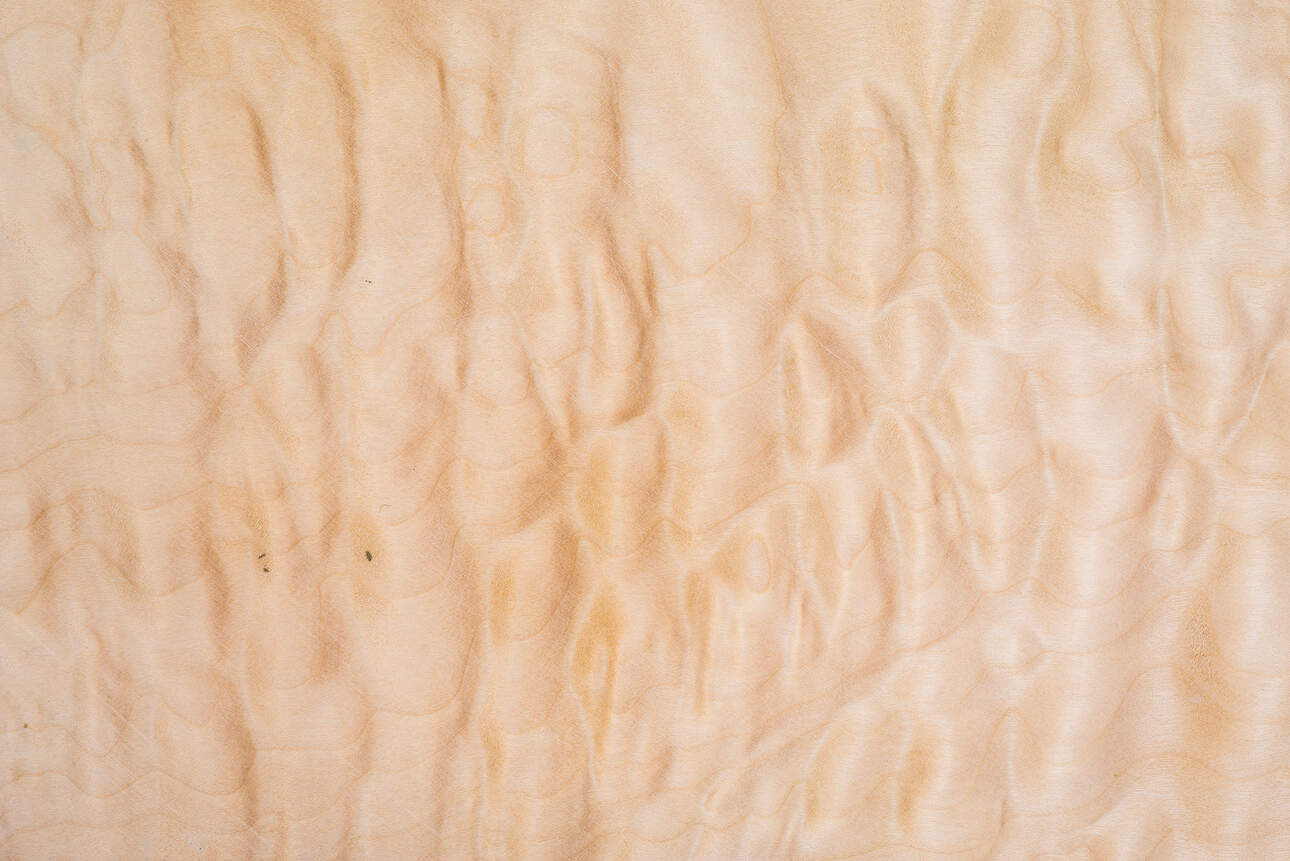
Heavy guitar tonewood: It’s beautiful, sounds good and gives a lot of sustain. But it’s also heavy, obviously. That weight can become a problem during extended playing sessions.
The choice of tonewood can significantly impact your guitar’s sound, playability, and aesthetics. Heavier woods often provide a richer, warmer tone, making them popular.
As you’ll dig into guitar tone wood, you’ll encounter several types of heavy wood. Each has its unique sound quality and characteristics.
Selecting the type of wood for your electric guitar goes beyond considering the weight and density. Factors such as wood variety, grain direction, and the guitar’s construction influence tonal attributes and performance.
So, as you explore your options for your future guitar, it’s good to know a thing or two about heavy tonewoods.
I invite you to read on to learn more!
Key Takeaways
- Heavier tonewoods influence the richness and warmth of an electric guitar’s sound;
- Consider wood variety, grain direction, and guitar construction;
- Assessing the tonal attributes helps making the right choice.
Identifying the Heaviest Tonewoods for Electric Guitars
Characteristics of Dense Wood
One of the critical factors to consider is the wood’s density. Dense wood offers unique tonal properties, increased sustain, and better resonance.
Common Heavy Woods Used in Electric Guitars
Several kinds of wood are commonly used in electric guitar construction. This is due to their density and tonal qualities.
Some of the heaviest wood types in tonewoods include:
- Rosewood: Known for its dark, warm tone, rosewood is a dense and popular wood that adds considerable weight to the guitar. This wood is commonly used for fingerboards and occasionally for guitar bodies;
- Ebony: Ebony is a hard, dense wood with a smooth, fast-playing surface. It is often used for fingerboards and gives the guitar a bright, snappy tone;
- Maple: Maple is popular for guitar necks and bodies due to its balanced tonal properties. It is a moderately heavy wood that contributes to the weight and sustain of the guitar;
- Mahogany: Mahogany is a staple solid body wood and neck wood. It’s known for producing a warm, rich tone with a smooth attack and a strong sustain. It generally emphasizes the midrange frequencies and can add a punchy growl.
Check the table below, displaying the density of these common heavy woods:
| TONEWOOD | DENSITY (KG/M3) | DENSITY (LB/FT3) |
|---|---|---|
| Rosewood | 850 | 53 |
| Ebony | 1020 | 64 |
| Maple | 750 | 47 |
| Mahogany | 605 | 38 |
Benefits of Heavy Woods in Electric Guitars
The use of heavy wood in electric guitars has several advantages, like better sustain and resonance. This allows your notes to ring out longer.
Physical Properties and Tone Attributes
When selecting the right tonewood, consider the wood’s physical properties and tone attributes.
Density and Resonance
The density of a guitar’s tonewood affects its resonance and sustain. Generally, heavier woods produce more sustain, while lighter woods provide warmth and depth.
For example, electric guitars from heavy woods such as mahogany or rosewood produce more sustain. Lighter woods like alder and ash offer a more balanced tonal character and more warmth in your guitar sound.
Here’s a table listing some common tonewoods, their densities, and tonal properties:
| WOOD TYPE | DENSITY | TONAL PROPERTIES |
|---|---|---|
| Mahogany | High | Warm, rich, and well-rounded |
| Rosewood | High | Heavy bass with bright highs and a strong midrange |
| Maple | High | Bright, with plenty of bite, tight bass |
| Ebony | High | Crisp, bright, clear and articulate tones |
| Alder | Medium | Balanced and warm |
| Ash | Medium | Bright, open, and slightly twangy |
| Basswood | Light | Warm, balanced, good midrange and a soft, tight bottom end |
Tonal Qualities and Sound Projection
The tonal qualities of an electric guitar’s tonewood can significantly affect the sound. Certain tonewoods are known for their specific tonal characteristics. They can contribute to a guitar’s tone’s warmth, brightness, or clarity.
For example, mahogany is a heavy wood. It’s often utilized for its warmth and rich tonal quality in guitar bodies and necks.
The choice of tonewood can also impact an electric guitar’s sound projection and response.
Sound projection refers to how the listener hears and perceives the guitar’s tone. Response refers to the guitar’s sensitivity and playability.
Heavier woods can enhance sustain, making your guitar’s sound project more effective. Especially when playing at louder volume levels.
Impact of Heavy Woods on Guitar Playability
Your choice of tonewood has a significant influence on playability and sound. Heavy woods are often desirable for their tonal characteristics but can also impact comfort.
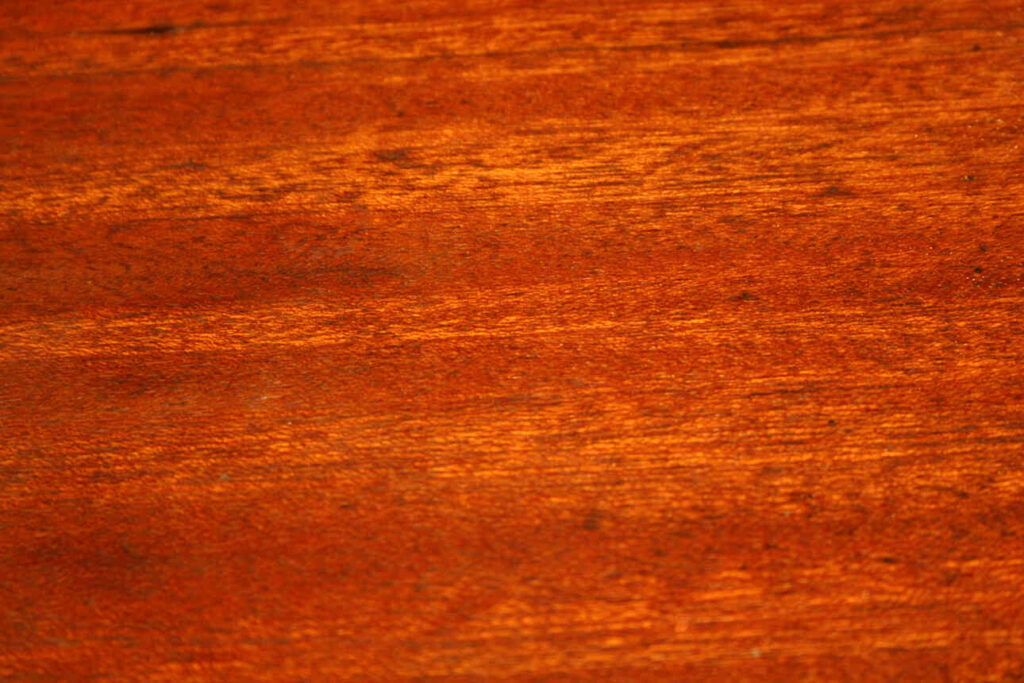
Weight and Comfort
The use of heavy wood can have an impact on the guitar’s weight.
A heavier guitar can be more challenging to play, as it can put more strain on your shoulder and back. Playing it sitting down isn’t too much of a problem. Playing it standing up, however, can be a whole different ball game.
I once developed tendinitis in my left shoulder from many hours of practicing in the wrong position. Since then, I have been unable to carry my seven-string with a mahogany body, maple top, and maple neck for over an hour.
If I play longer, my shoulder gets sore again. My shoulder copes much better when I pick up my basswood (see below) seven-string.
In other words, the weight of the wood definitely takes a toll on your body. But you probably don’t have tendinitis, so you should be fine.
Comparing Heavy Wood with Lightwoods
When considering the tonal characteristics of an electric guitar, it’s good to know the tonal differences between heavy wood and lighter wood.
Basswood and Swamp Ash
Basswood is known for its light weight and balanced tonal properties. This makes it a popular choice for guitar bodies. This wood provides a rich and warm sound. It enhances the midrange and offers smooth highs and well-defined lows.
Swamp ash is another light wood option popular for its bright, resonant qualities. Its open-grain pattern gives it a unique look. Its low density allows for an expansive frequency range. It contributes to a snappy attack and a more transparent sound.
In short, basswood provides a more balanced and versatile tonal quality. Swamp ash is favored for its brightness and clarity.
Characteristics of Lighter Woods
Lighter woods like basswood and swamp ash affect the guitar’s sound differently.
Here are some key points to keep in mind when comparing them with heavy wood options:
- Tonal balance: Lighter woods often provide a more balanced tonal range. This emphasizes the midrange frequencies. This results in a comfortable playing experience and versatile sound;
- Resonance: Lighter woods tend to resonate more due to their lower density. This can lead to a livelier sound;
- Weight: Lighter woods are more comfortable to play for extended periods. Therefore, it’s a more comfortable choice for gigging and traveling musicians.
Tips for Choosing Guitar Wood
Assessing Your Sound Preferences
When selecting the perfect electric guitar tonewood, assess your sound preferences. Different woods have varying densities. This contributes to the tonal characteristics of your guitar.
Heavy woods like mahogany and maple generally deliver a warm, full sound. Lighter woods, including basswood and alder, produce a brighter tone.
A heavier guitar can be more challenging to play, as it can put more strain on your shoulder and back
Considering Guitar Type and Style
Another aspect to consider is the guitar’s type and style. Electric guitars can be crafted from a variety of guitar tonewoods. Each has its unique sound qualities.
Semi-hollow and hollow-body guitars often use lighter wood to emphasize natural resonance. Solid-body guitars may feature heavier woods for increased sustain and richer tones.
Here are some tips to help you choose the right tonewood for your guitar type and style:
- Solid-body guitars: Favor dense woods like mahogany or maple for richer, fuller tones. These woods are well-suited for heavy rock, metal, and blues genres;
- Semi-hollow and hollow-body guitars: Opt for lighter woods such as basswood or alder. They enhance the guitar’s natural resonance. This choice is ideal for jazz, country, or classic rock styles.
These distinctions are not as strict as they seem. An example: Ibanez, known for making rock and metal guitars, uses basswood extensively for their bodies.
In the end, it all comes down to using your ears and choosing your guitar based on your preferences and taste!
Care and Maintenance
Protecting Heavier Wood Bodies
To keep your heavy wood-bodied guitar in top condition, consider the following precautions:
- Use a quality guitar case: Invest in a hard-shell case designed for your guitar’s size and shape. This will provide optimal protection during transportation and storage;
- Clean regularly: Wipe down your guitar with a soft, dry cloth after each use. It removes dust, sweat, and oils that can tarnish the finish and affect the guitar’s sound. For stubborn grime, use a gentle guitar cleaner;
- Handle with care: Always handle your guitar gently. Ensure it is adequately supported when playing or storing it. Avoid placing it in damp or humid environments. Excessive moisture can cause wood to warp.
Long-Term Wood Care Considerations
Here are a few recommendations for preserving your guitar over the years:
- Control humidity: Use a humidity control device like a guitar or room humidifier. This device allows you to maintain a consistent humidity level between 45-55%. It will help prevent the wood from shrinking or swelling due to fluctuating humidity levels;
- Regularly adjust the truss rod: The truss rod is an adjustable support rod inside your guitar’s neck. It counteracts the tension from the strings. Regularly ensure it’s correctly adjusted to prevent warping or damage to the neck;
- Schedule professional maintenance: Regularly have your guitar inspected and serviced by a professional luthier. They can address any issues before they become significant problems.
Frequently Asked Questions
Which tonewood offers the most density and weight for electric guitars?
The most dense and heavy tonewood commonly used for electric guitars is rosewood. Its high density contributes to a robust and weighty feel.
Can you highlight the tonewoods that contribute to a heavier electric guitar build?
Several tonewoods contribute to a heavier electric guitar build. Other dense woods besides rosewood include mahogany, maple, and walnut. Each of these woods offers unique tonal qualities and varies in weight.
What are the characteristics of mahogany when used in electric guitar bodies?
Mahogany is a popular tonewood known for its warm and full-bodied tone. It provides excellent sustain and resonance. Its density also offers a relatively heavy build without being overly cumbersome.
What factors affect the weight and sustain of wood used in electric guitars?
These factors include density and grain structure. Dense woods generally provide more weight and sustain. Lighter woods may offer less sustain but improved resonance.
Are there any woods known to enhance the strength and longevity of electric guitars?
Some tonewoods offer added strength and longevity. For example, rosewood and maple are dense and resistant to wear. This provides a durable foundation for a guitar’s lifespan. Solid and stable wood can prevent warping and structural issues over time.

